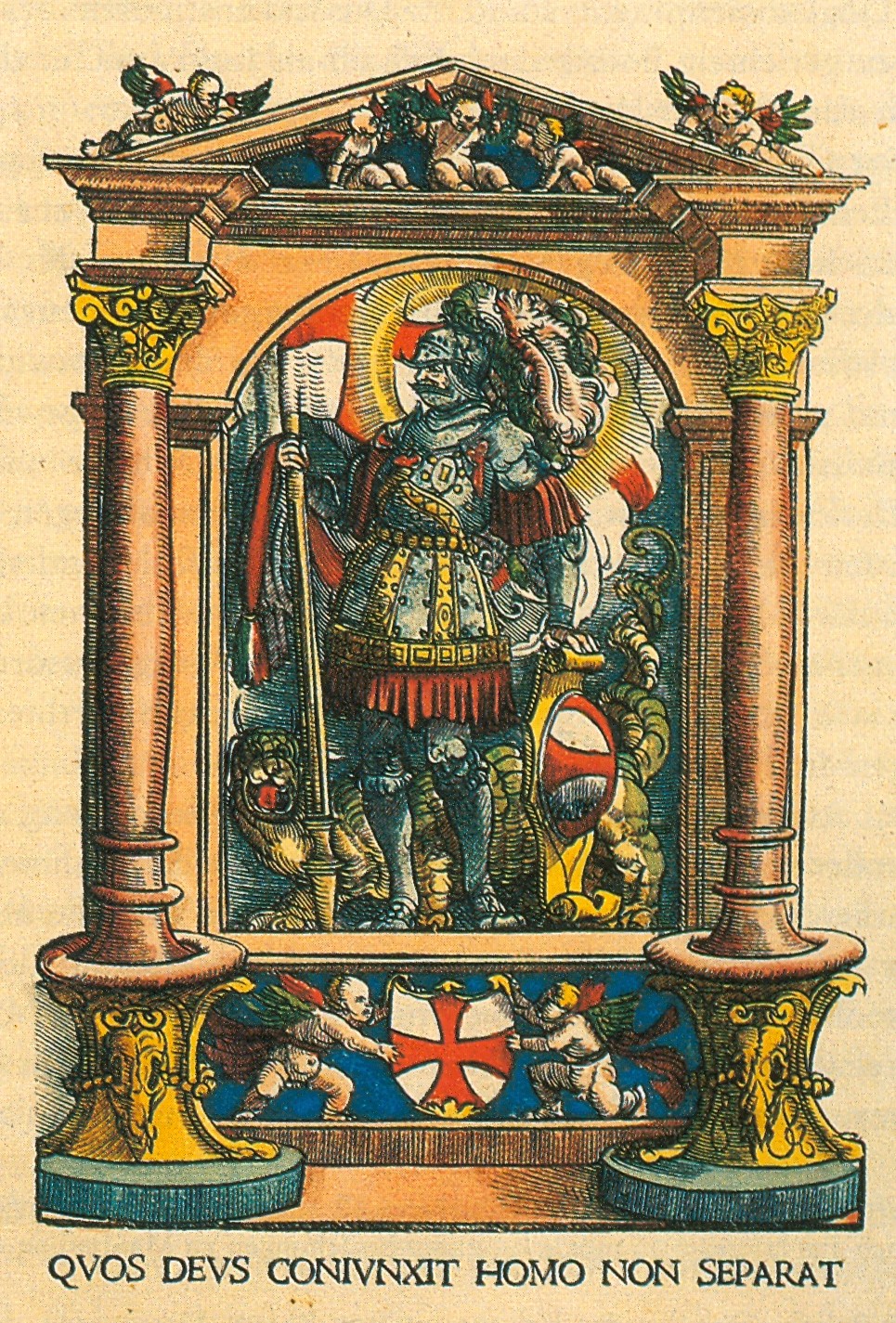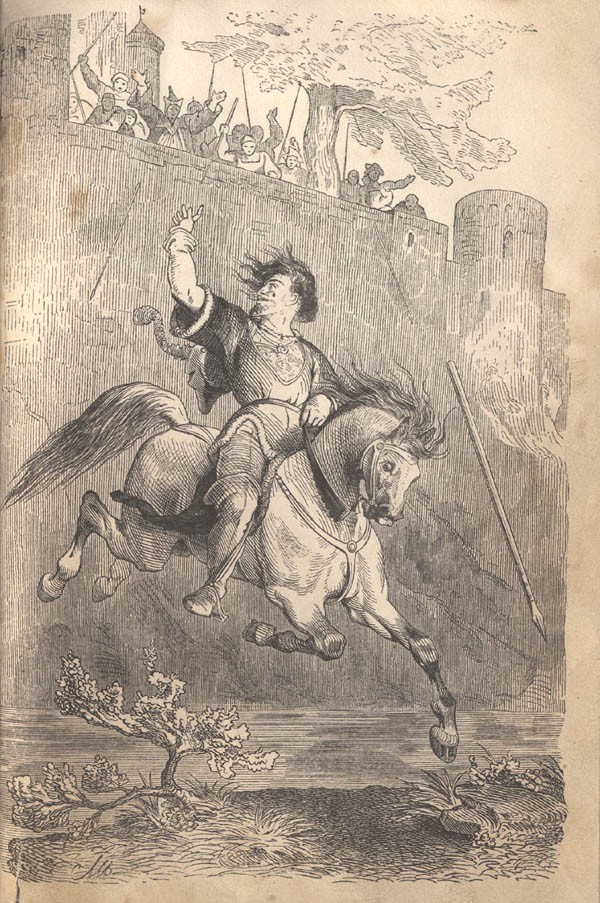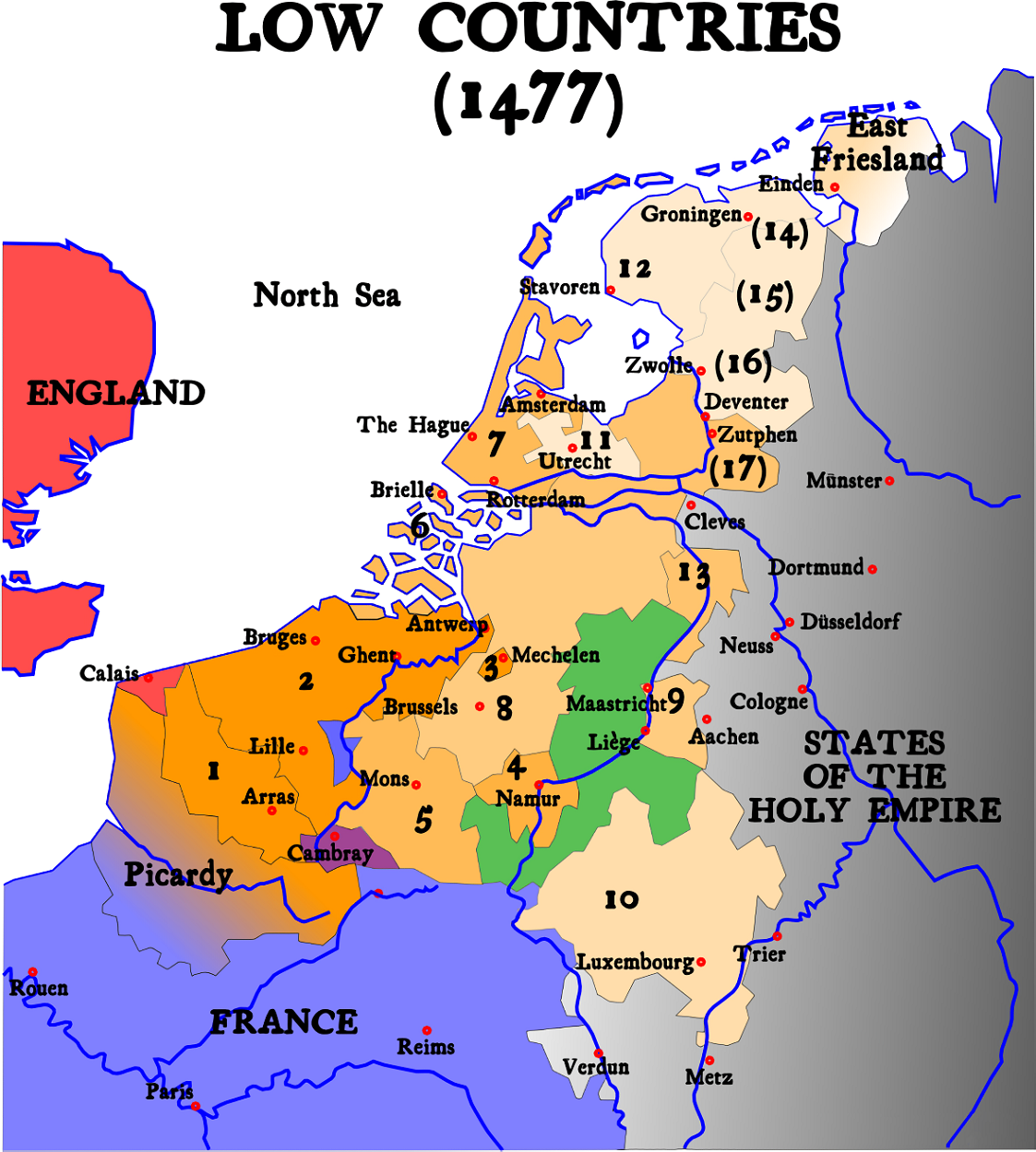|
Swabian League
The Swabian League (''Schwäbischer Bund'') was a mutual defence and peace keeping association of Imperial Estates – free Imperial cities, prelates, principalities and knights – principally in the territory of the early medieval stem duchy of Swabia established on 14 February 1488. The religious revolution of the Protestant Reformation divided its members, and the Swabian League disbanded in 1534. History The Swabian League was established in 1488 at the behest of Emperor Frederick III of Habsburg and supported as well by Bertold von Henneberg-Römhild, archbishop of Mainz, whose conciliar rather than monarchic view of the ''Reich'' often put him at odds with Frederick's successor Maximilian. The Swabian League cooperated towards the keeping of the imperial peace and at least in the beginning curbing the expansionist Bavarian dukes from the House of Wittelsbach and the revolutionary threat from the south in the form of the Swiss. The League held regular meetings, supported ... [...More Info...] [...Related Items...] OR: [Wikipedia] [Google] [Baidu] |
Landgraviate Of Hesse
The Landgraviate of Hesse (german: Landgrafschaft Hessen) was a principality of the Holy Roman Empire. It existed as a single entity from 1264 to 1567, when it was divided among the sons of Philip I, Landgrave of Hesse. History In the early Middle Ages the territory of Hessengau, named after the Germanic Chatti tribes, formed the northern part of the German stem duchy of Franconia, along with the adjacent Lahngau. Upon the extinction of the ducal Conradines, these Rhenish Franconian counties were gradually acquired by Landgrave Louis I of Thuringia and his successors. After the War of the Thuringian Succession upon the death of Landgrave Henry Raspe in 1247, his niece Duchess Sophia of Brabant secured the Hessian possessions for her minor son Henry the Child. In 1264 he became the first Landgrave of Hesse and the founder of the House of Hesse. The remaining Thuringian landgraviate fell to the Wettin's Henry III, Margrave of Meissen. Henry I of Hesse was raised to the stat ... [...More Info...] [...Related Items...] OR: [Wikipedia] [Google] [Baidu] |
German Peasants' War
The German Peasants' War, Great Peasants' War or Great Peasants' Revolt (german: Deutscher Bauernkrieg) was a widespread popular revolt in some German-speaking areas in Central Europe from 1524 to 1525. It failed because of intense opposition from the aristocracy, who slaughtered up to 100,000 of the 300,000 poorly armed peasants and farmers. The survivors were fined and achieved few, if any, of their goals. Like the preceding Bundschuh movement and the Hussite Wars, the war consisted of a series of both economic and religious revolts in which peasants and farmers, often supported by Anabaptist clergy, took the lead. The German Peasants' War was Europe's largest and most widespread popular uprising before the French Revolution of 1789. The fighting was at its height in the middle of 1525. The war began with separate insurrections, beginning in the southwestern part of what is now Germany and Alsace, and spread in subsequent insurrections to the central and eastern areas of ... [...More Info...] [...Related Items...] OR: [Wikipedia] [Google] [Baidu] |
Franconian War
The Franconian War (german: Fränkische Krieg) was waged in 1523 when the Swabian League attacked several robber baron castles in Franconia, whose nobles were supporters of Hans Thomas of Absberg in the Absberg Feud. Definitions Franconian War By comparison with other wars and battles the Franconian War was limited in extent and restricted to the region of Franconia. In a narrow sense, the term 'Franconian War' refers to the campaign by the Swabian League against 23 castles in June and July 1523. When the term first arose is still unclear, but reports of the conflict from the period immediately after 1523 were already speaking of 'acts of war'. In the 19th century the term was given a note of romance. Today's historians use the term mainly because it conveys the sense that two opponents with conflicting interests were involved in the fighting and the situation was more complex than one might think, if it were simply seen as a retaliation against the robber barons. Around t ... [...More Info...] [...Related Items...] OR: [Wikipedia] [Google] [Baidu] |
Robber Baron (feudalism)
A robber baron or robber knight (german: Raubritter) was an unscrupulous feudal landowner who, protected by his fief's legal status, imposed high taxes and tolls out of keeping with the norm without authorization by some higher authority. Some resorted to actual banditry. The German term for robber barons, ''Raubritter'' (robber knights), was coined by Friedrich Bottschalk in 1810.Klaus Graf, "Feindbild und Vorbild: Bemerkungen zur stadtischen Wahrnehmung des Adels", ''ZGO'' 141 (1993), pp. 121–154, at 138 Some robber barons violated the custom under which tolls were collected on the Rhine either by charging higher tolls than the standard or by operating without authority from the Holy Roman Emperor altogether. During the period in the history of the Holy Roman Empire known as the Great Interregnum (1250–1273), the number of such tolling stations exploded in the absence of Imperial authority. Medieval robber barons most often imposed high or unauthorized tolls on rivers or ... [...More Info...] [...Related Items...] OR: [Wikipedia] [Google] [Baidu] |
Charles V, Holy Roman Emperor
Charles V, french: Charles Quint, it, Carlo V, nl, Karel V, ca, Carles V, la, Carolus V (24 February 1500 – 21 September 1558) was Holy Roman Emperor and Archduke of Austria from 1519 to 1556, King of Spain ( Castile and Aragon) from 1516 to 1556, and Lord of the Netherlands as titular Duke of Burgundy from 1506 to 1555. He was heir to and then head of the rising House of Habsburg during the first half of the 16th century, his dominions in Europe included the Holy Roman Empire, extending from Germany to northern Italy with direct rule over the Austrian hereditary lands and the Burgundian Low Countries, and Spain with its southern Italian possessions of Naples, Sicily, and Sardinia. He oversaw both the continuation of the long-lasting Spanish colonization of the Americas and the short-lived German colonization of the Americas. The personal union of the European and American territories of Charles V was the first collection of realms labelled " the empire ... [...More Info...] [...Related Items...] OR: [Wikipedia] [Google] [Baidu] |
Ulrich Of Württemberg
Ulrich (), is a German given name, derived from Old High German ''Uodalrich'', ''Odalric''. It is composed of the elements '' uodal-'' meaning "(noble) heritage" and ''-rich'' meaning "rich, powerful". Attested from the 8th century as the name of Alamannic nobility, the name is popularly given from the high medieval period in reference to Saint Ulrich of Augsburg (canonized 993). There is also a surname Ulrich. It is most prevalent in Germany and has the highest density in SwitzerlandThis last name was found in the United States around the year 1840Most Americans with the last name were concentrated in Pennsylvania, which was home to many Pennsylvania Dutch, German immigrant communities. Nowadays in the United States, the name is distributed largely in the Pennsylvania-Ohio regio History Documents record the Old High German name ''Oadalrich'' or ''Uodalrich'' from the later 8th century in Alamannia. The related name ''Adalric'' (Anglo-Saxon cognate '' Æthelric'') is attested fr ... [...More Info...] [...Related Items...] OR: [Wikipedia] [Google] [Baidu] |
Swabian War
The Swabian War of 1499 ( gsw, Schwoobechrieg (spelling depending on dialect), called or ("Swiss War") in Germany and ("War of the Engadin") in Austria) was the last major armed conflict between the Old Swiss Confederacy and the House of Habsburg. What had begun as a local conflict over the control of the Val Müstair and the Umbrail Pass in the Grisons soon got out of hand when both parties called upon their allies for help; the Habsburgs demanding the support of the Swabian League, while the Federation of the Three Leagues of the Grisons turning to the Swiss '' Eidgenossenschaft''. Hostilities quickly spread from the Grisons through the Rhine valley to Lake Constance and even to the Sundgau in southern Alsace, the westernmost part of the Habsburg region of Further Austria.The main references used are Morard in general and Riezler for the detailed chronology in the section on the course of the war. Many battles were fought from January to July 1499, and in all but a ... [...More Info...] [...Related Items...] OR: [Wikipedia] [Google] [Baidu] |
Eberhard I, Duke Of Württemberg
Eberhard I of Württemberg (11 December 144524 February 1496) was known as Count ''Eberhard V'' from 1459 to 1495, and from July 1495 he was the first Duke of Württemberg. He is also known as ''Eberhard im Bart'' (Eberhard the Bearded). Early life Born at Urach, he was the son of count Ludwig I and his wife Mechthild of the Palatinate, born as countess palatine by the Rhine. Count Eberhard V officially took charge of the government of Württemberg-Urach when he was still underage; Württemberg had been divided since 1442. At first he had a legal guardian, a respected nobleman who had mentored his father as a youth, Rudolph von Ehingen of Kilchberg. However, in 1459, assisted by Frederick I, Elector Palatine, he threw off this restraint, and undertook the government of the district of Urach as Count Eberhard V. He neglected his duties as a ruler and lived a reckless life until 1468. During this time, a fencing manual was created for Eberhard in 1467 by Hans Talhoffer. ... [...More Info...] [...Related Items...] OR: [Wikipedia] [Google] [Baidu] |
Seventeen Provinces
The Seventeen Provinces were the Imperial states of the Habsburg Netherlands in the 16th century. They roughly covered the Low Countries, i.e., what is now the Netherlands, Belgium, Luxembourg, and most of the French departments of Nord (French Flanders and French Hainaut) and Pas-de-Calais ( Artois). Also within this area were semi-independent fiefdoms, mainly ecclesiastical ones, such as Liège, Cambrai and Stavelot-Malmedy. The Seventeen Provinces arose from the Burgundian Netherlands, a number of fiefs held by the House of Valois-Burgundy and inherited by the Habsburg dynasty in 1482, and held by Habsburg Spain from 1556. Starting in 1512, the Provinces formed the major part of the Burgundian Circle. In 1581, the Seven United Provinces seceded to form the Dutch Republic. Composition After the Habsburg emperor Charles V had re-acquired the Duchy of Guelders from Duke William of Jülich-Cleves-Berg by the 1543 Treaty of Venlo, the Seventeen Provinces comprise ... [...More Info...] [...Related Items...] OR: [Wikipedia] [Google] [Baidu] |
Estates Of The Realm
The estates of the realm, or three estates, were the broad orders of social hierarchy used in Christendom (Christian Europe) from the Middle Ages to early modern Europe. Different systems for dividing society members into estates developed and evolved over time. The best known system is the French ''Ancien Régime'' (Old Regime), a three-estate system which was made up of clergy (the First Estate), nobles (Second Estate), peasants and bourgeoisie (Third Estate). In some regions, notably Sweden and Russia, burghers (the urban merchant class) and rural commoners were split into separate estates, creating a four-estate system with rural commoners ranking the lowest as the Fourth Estate. In Norway the taxpaying classes were considered as one, and with a very little aristocracy, this class/estate were as powerful as the monarchy itself. In Denmark, however, only owners of large tracts of land had any influence. Furthermore, the non-landowning poor could be left outside the es ... [...More Info...] [...Related Items...] OR: [Wikipedia] [Google] [Baidu] |
County Of Tyrol
The (Princely) County of Tyrol was an estate of the Holy Roman Empire established about 1140. After 1253, it was ruled by the House of Gorizia and from 1363 by the House of Habsburg. In 1804, the County of Tyrol, unified with the secularised prince-bishoprics of Trent and Brixen, became a crown land of the Austrian Empire. From 1867, it was a Cisleithanian crown land of Austria-Hungary. Today the territory of the historic crown land is divided between the Italian autonomous region of Trentino-Alto Adige/Südtirol and the Austrian state of Tyrol. The two parts are today associated again in the Tyrol–South Tyrol–Trentino Euroregion. History Establishment At least since German king Otto I had conquered the former Lombard kingdom of Italy in 961 and had himself crowned Holy Roman Emperor in Rome, the principal passes of the Eastern Alps had become an important transit area. The German monarchs regularly travelled across Brenner or Reschen Pass on their Ita ... [...More Info...] [...Related Items...] OR: [Wikipedia] [Google] [Baidu] |







